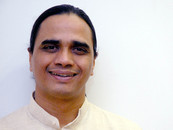Be your own motivational guru source: TOI Jan. 11, 2012
We often try to change ourselves but give up midway - and then blame everyone around for our failure. Clinical psychologist Pulkit Sharma shows you how to keep yourself motivated
All of us crave and plan for certain changes within, whether it is starting a new exercise regimen, giving up a self-defeating behaviour, quitting an addiction or striking a work-relationship balance. We begin with great zeal, but after a few days, the motivation dries up.
Soon, we are back to our old ways even though we despise them. If we keep the motivation alive, there will be a new beginning. It sounds simple, but being your own motivational guru is tricky and requires a deep psycholigical analysis. Here are some tips that could help.
Understanding negatives:
Every behavioral pattern has a psychological reason behind it. An attempt to uproot it from your psyche is the wrong approach, your overreating could be a way to keep away distressing thoughts and this crutch cannot be simply thrown away. An alternative way is to understand the reason behind the behaviour.
Discover your pace: What motivates one person can be disastrous for another. Get in touch with your core and follow your rhythm. Even if your gym couch tells you that a person of your age should be doing 45 minues on the treadmill but you can just manage 20, feel comfortable. If you disregard your instincts, you will feel burdened.
Acknowledge progress: People become self-critical and hopeless when the goal seems unattainable. Even if you are managing to do a little, acknowledge the progress. You may be miles away from the desired goal, but as long as your steps are in the right direction, there is a reason to celebrate.
Balancing acts: A lot of hard work goes in trying to inculcate a new habit, often resulting in burnout. So it is sometimes important to take a break from goals, targets and progress reports. It may even be a good idea to just allow yourself to enjoy what you are reading rather than calculating how many pages you have read.
Smart preparation: Set realistic goals and targets. Review your progress and adjust the goals and targets in case these are required.
Handling failure: Prepare yourself to handle failure and continue to work. Tell yourself that your attempt has failed, but you haven't.
We often try to change ourselves but give up midway - and then blame everyone around for our failure. Clinical psychologist Pulkit Sharma shows you how to keep yourself motivated
All of us crave and plan for certain changes within, whether it is starting a new exercise regimen, giving up a self-defeating behaviour, quitting an addiction or striking a work-relationship balance. We begin with great zeal, but after a few days, the motivation dries up.
Soon, we are back to our old ways even though we despise them. If we keep the motivation alive, there will be a new beginning. It sounds simple, but being your own motivational guru is tricky and requires a deep psycholigical analysis. Here are some tips that could help.
Understanding negatives:
Every behavioral pattern has a psychological reason behind it. An attempt to uproot it from your psyche is the wrong approach, your overreating could be a way to keep away distressing thoughts and this crutch cannot be simply thrown away. An alternative way is to understand the reason behind the behaviour.
Discover your pace: What motivates one person can be disastrous for another. Get in touch with your core and follow your rhythm. Even if your gym couch tells you that a person of your age should be doing 45 minues on the treadmill but you can just manage 20, feel comfortable. If you disregard your instincts, you will feel burdened.
Acknowledge progress: People become self-critical and hopeless when the goal seems unattainable. Even if you are managing to do a little, acknowledge the progress. You may be miles away from the desired goal, but as long as your steps are in the right direction, there is a reason to celebrate.
Balancing acts: A lot of hard work goes in trying to inculcate a new habit, often resulting in burnout. So it is sometimes important to take a break from goals, targets and progress reports. It may even be a good idea to just allow yourself to enjoy what you are reading rather than calculating how many pages you have read.
Smart preparation: Set realistic goals and targets. Review your progress and adjust the goals and targets in case these are required.
Handling failure: Prepare yourself to handle failure and continue to work. Tell yourself that your attempt has failed, but you haven't.
